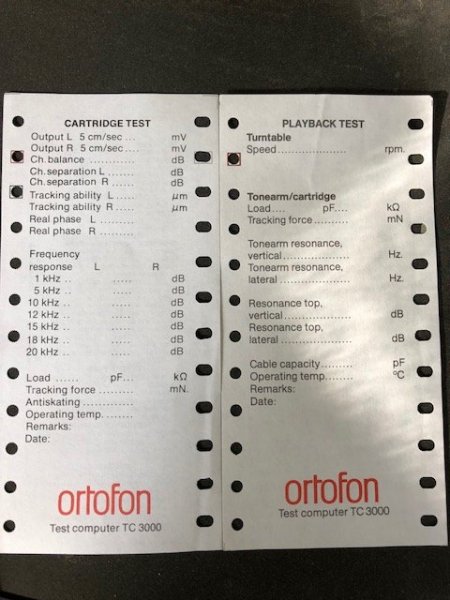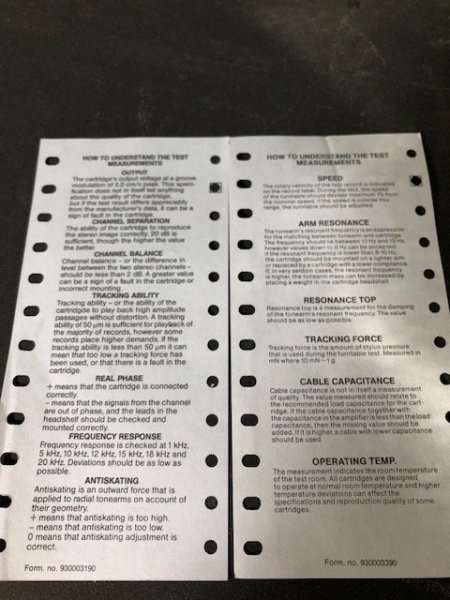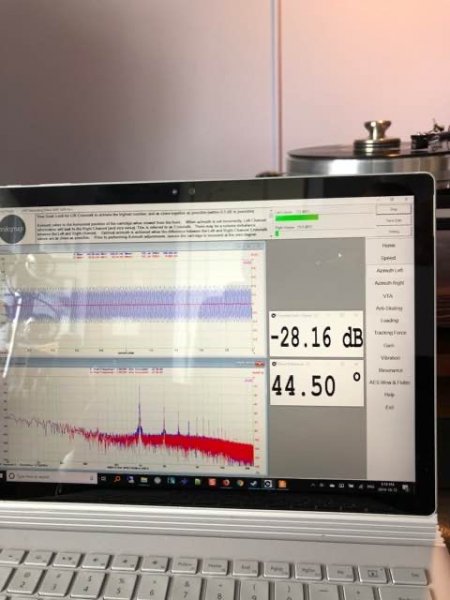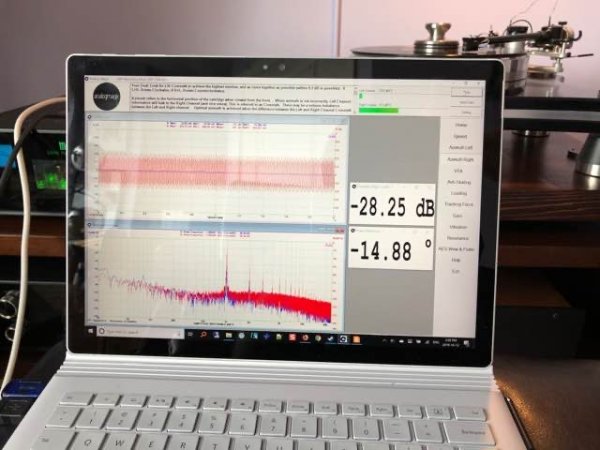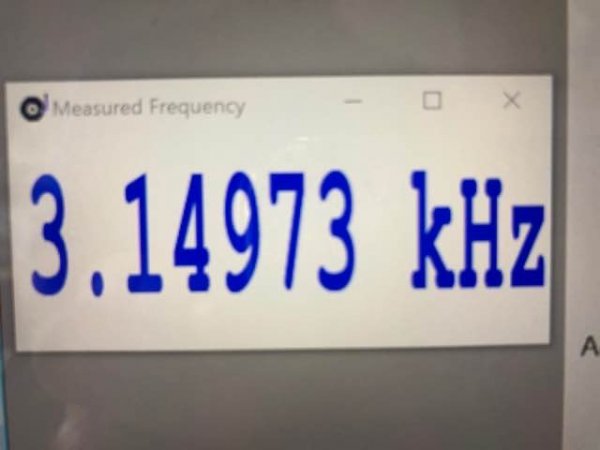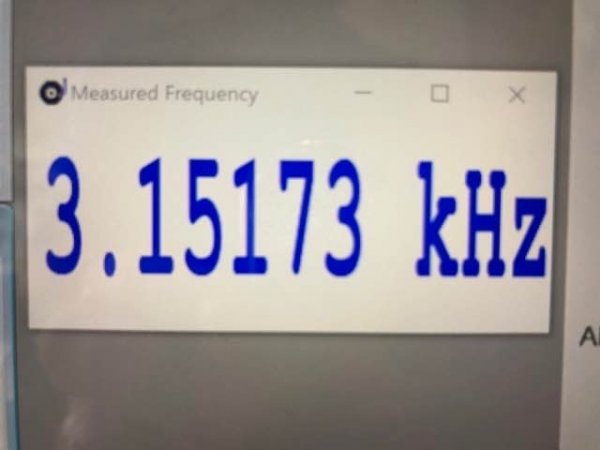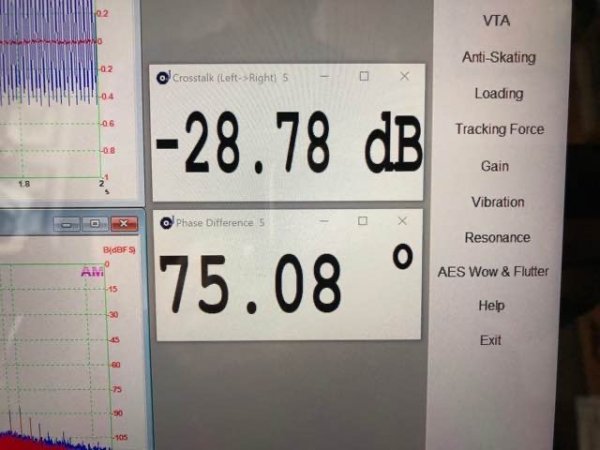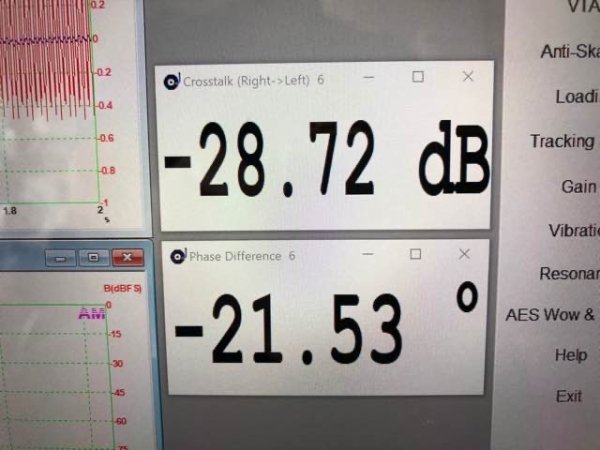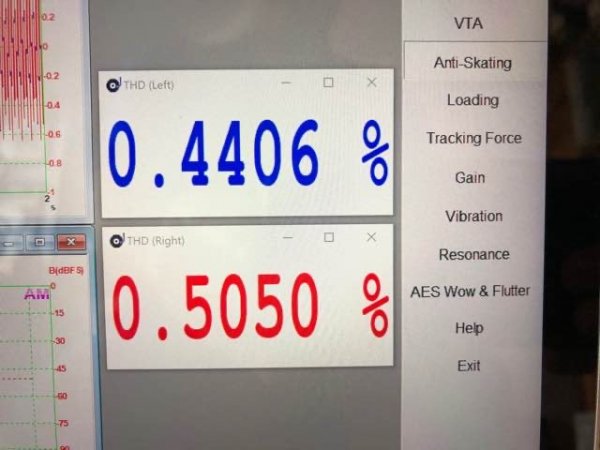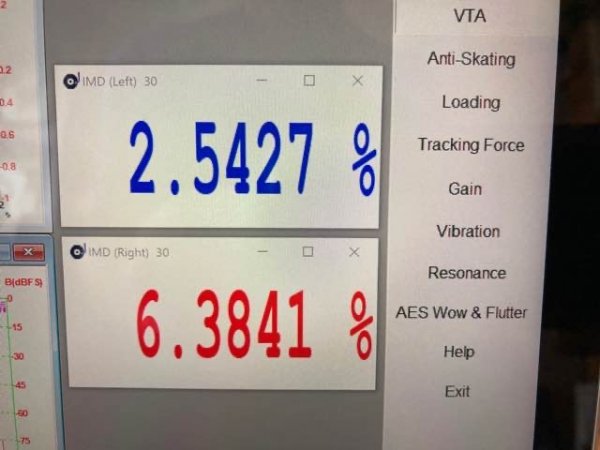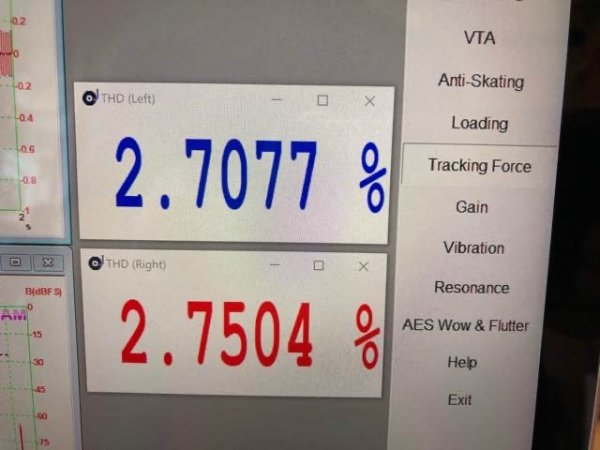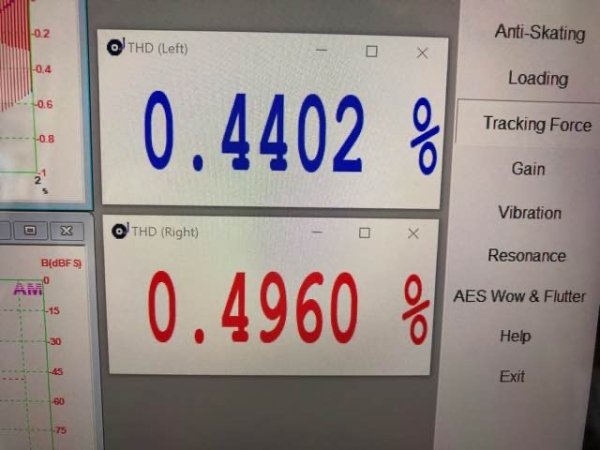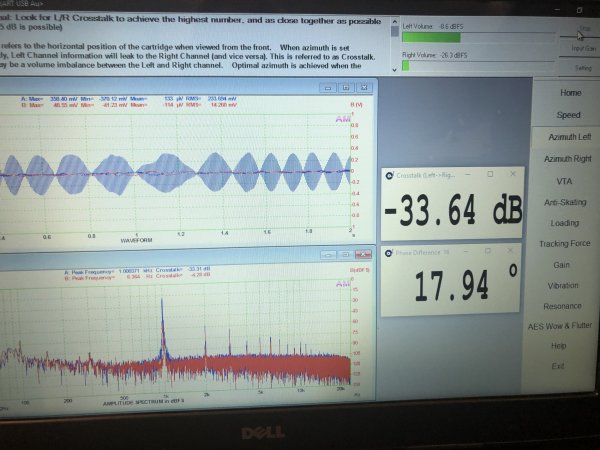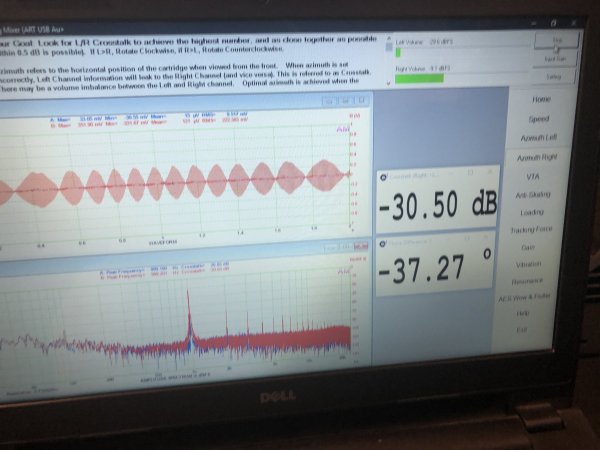This is what I posted over on the VPI forum:
------------------------------------
I received the software the week before last and had it up and running last weekend. I set the cart up initially with the supplied VPI jig and set the azimuth by hand/eye. This was my "learning weekend" with the software, and the measured results after various adjustments already showed quite a difference - especially the azimuth. For example, by "hand/eye" adjustments the azimuth measurements were around 26 db on the left and 34 db on the right and after using the software I had them nicely balanced around 28.5 db.
This weekend I also tried out the Mint Best Protractor. Now I had to rely upon my patience and not so steady hands. Still, I think I saw the stylus needed a very slight adjustment and I then ran Analog Magik again. This time I managed to get the azimuth slightly higher to around 28.75 for each channel. The biggest difference was the measured results seemed to be more consistent whilst the tracks were being played. Before the cart adjustment with the Mint, the measured results seemed to fluctuate more whilst the test tracks were being played.
I'll include my test results here. I have no idea if these are "good" or "bad" results for my setup with the VPI Prime Signature and Benz Micro LPS. For example, the published spec of my cart is 35 db for channel separation, but I'm only getting 28.75, but the AM site says they rarely see measurements over 30 db.
The only reading that seems a little whacky is the VTA, but with my first usage of AM the readings were around 12% (which is very high/poor).
I'm really pleased with the software. So, how does the vinyl sound now? More precise I'd say. More detailed and accurate - everything feels better balanced with better imaging. How do I know it's not just my imagination? My expensive DAC now sounds worse
 View attachment 57961View attachment 57962View attachment 57963View attachment 57964View attachment 57965View attachment 57966View attachment 57967View attachment 57968
View attachment 57961View attachment 57962View attachment 57963View attachment 57964View attachment 57965View attachment 57966View attachment 57967View attachment 57968
